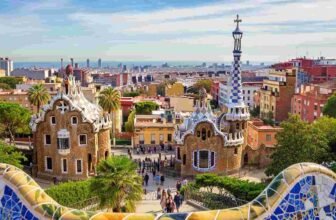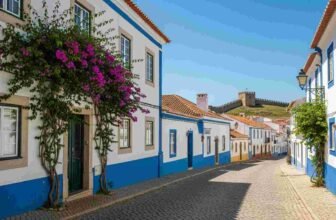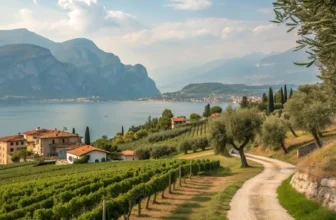
Remember the thrill of getting lost? That moment when the world feels vast and mysterious when every turn holds a story instead of a Google pin. This is travel at its purest—no algorithms, no filters, just you and the hum of the real world.
It’s about tracing a creased map under a dim train light, laughing with strangers over a shared compass, or pressing a postcard into a mailbox, ink still smudged from hasty writing. This is how we used to wander—slow, curious, alive. Ready to trade screens for serendipity? Let’s go.
1. Trans-Siberian Railway (Russia to Vladivostok)

There’s something almost magical about boarding the Trans-Siberian Railway with nothing but a paper map, a stack of postcards, and a sense of old-world adventure. This 6,000-mile journey crosses eight time zones, taking you through Siberian forests, remote villages, and the vast Mongolian steppe. Forget Wi-Fi—here, the rhythm of the train tracks and conversations with fellow travelers become your entertainment.
I once met a retiree who’d been riding this route for decades, swapping stories over shared tea in the dining car. The lack of digital distractions forces you to soak in the landscapes—golden sunrises over Lake Baikal, the Ural Mountains fading into the distance, and babushkas selling homemade dumplings at station stops.
Why it’s perfect for analog travel: The slow pace encourages journaling, sketching, or simply staring out the window. Plus, train compartments feel like a throwback to a simpler era—no notifications, just the clatter of wheels and the occasional vodka toast with new friends.
Need-to-know details:
- Best months: May–September (mild weather, long daylight).
- Analog essentials: A paper map of stops, a physical phrasebook (English isn’t widespread), and postcards from remote stations.
- Pro tip: Book a “kupe” (compartment) cabin for privacy and charm.
2. Camino de Santiago (Spain)
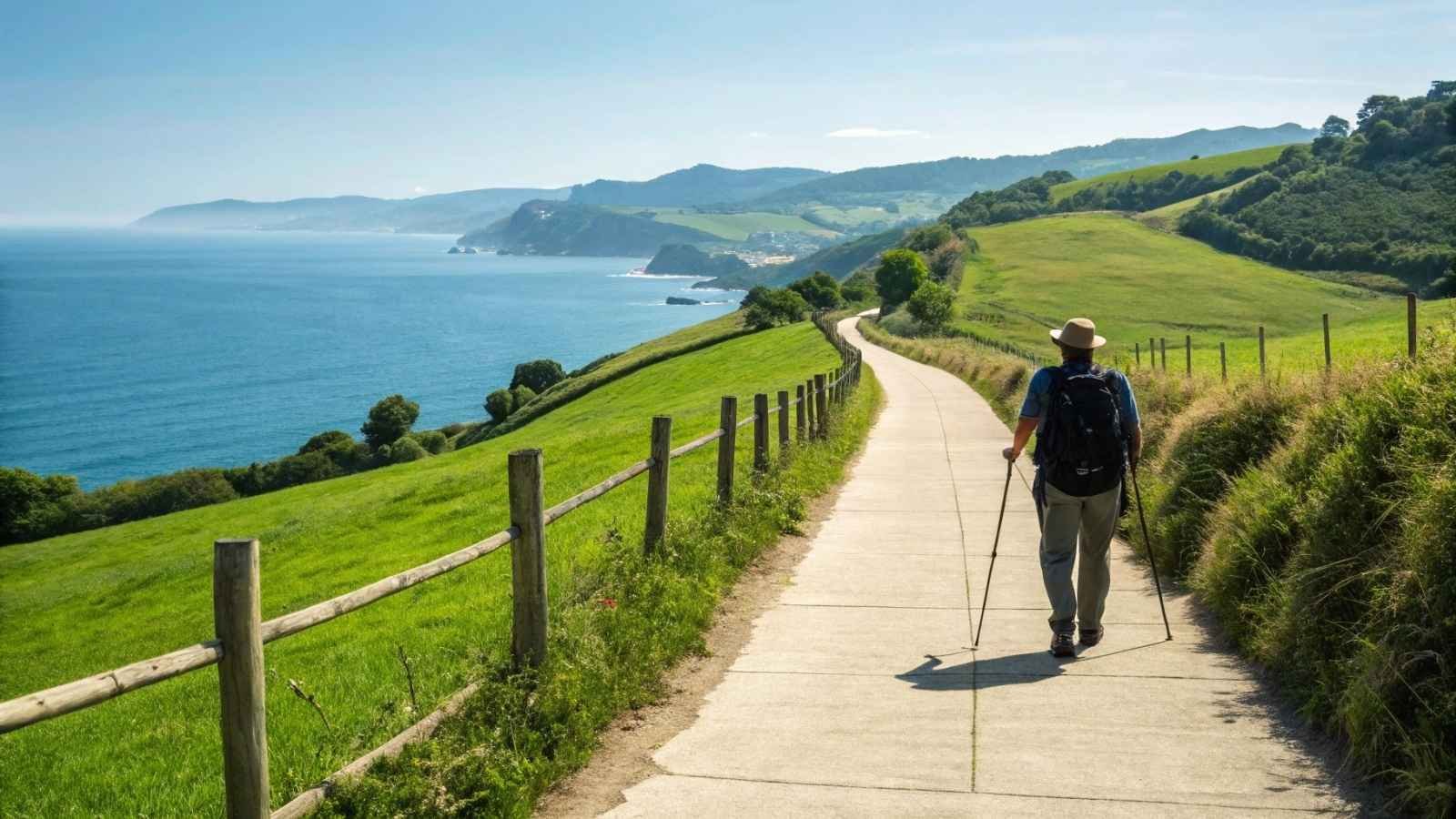
Walking the Camino de Santiago is like stepping into a medieval pilgrimage—no apps, just scallop-shell markers and fellow wanderers. Whether you choose the popular Camino Francés or the coastal Camino Portugués, the journey is about simplicity: a backpack, a paper credential (pilgrim passport), and the joy of arriving in a new village each night.
I’ll never forget the time I got lost near Galicia (my map was slightly outdated) and a local farmer redirected me with hand gestures and a smile. The Camino strips away modern clutter, replacing it with stone churches, communal albergues (hostels), and the ritual of collecting stamps in your passport.
Why it’s perfect for analog travel: The route demands mindfulness—you navigate by sun position, trail markers, and word of mouth. And let’s be honest, there’s no Instagram filter for the feeling of reaching Santiago’s cathedral after weeks on foot.
Need-to-know details:
- Best months: April–June or September–October (avoid summer crowds/heat).
- Analog essentials: A physical guidebook, a compass (for the purists), and a journal for reflections.
- Pro tip: Start with shorter routes (like the Camino Inglés) if you’re new to long-distance walking.
3. Route 66 Road Trip (USA)

Route 66 is the ultimate analog road trip—a 2,400-mile ribbon of nostalgia where diners serve pie on checkered tablecloths and neon motel signs glow against desert skies. Ditch Google Maps; here, a vintage highway atlas and roadside billboards guide you. I once followed a hand-painted sign to a “mystery shack” in Arizona, only to find a quirky house built on a 30-degree slant (worth every detour).
The beauty of Route 66 lies in its unplanned moments: chatting with a retired mechanic at a gas station, flipping through vinyl at a ghost-town record shop, or mailing postcards from the Midpoint Café in Adrian, Texas. You’re not just driving—you’re time-traveling.
Why it’s perfect for analog travel: The route rewards spontaneity (unlike algorithm-driven travel apps). Plus, many landmarks don’t even have websites—just hand-written hours on dusty doors.
Need-to-know details:
- Best months: April–May or September–October (avoid desert summer heat).
- Analog essentials: A paper Route 66 map, a Polaroid camera, and quarters for old-school jukeboxes.
- Pro tip: Stop at Wigwam Motels (Arizona/California) for a kitschy sleep in a concrete teepee.
4. The Scottish Highlands (UK)

In the Highlands, your phone’s GPS will gasp and give up—this is a land of fog-laced glens, sheep-blocked roads, and folklore scribbled in pub notebooks. Navigating with an Ordnance Survey map feels like decoding a treasure hunt, especially when you stumble upon a hidden bothy (hiker’s shelter) or a lone piper on a misty hill.
On a rainy afternoon near Glencoe, I took refuge in a 17th-century inn where the bartender traced my route on my map with a pencil, adding, “Watch for the fairy pools near the bend.” The Highlands demand patience—weather shifts, roads wind, and the best stories come from asking directions at a village shop.
Why it’s perfect for analog travel: No cell service? No problem. You’ll rely on hand-drawn directions, local gossip, and serendipity—plus, postcards of lochs and castles beat Instagram any day.
Need-to-know details:
- Best months: June–August (longer days) or September for autumn colors.
- Analog essentials: A waterproof map, a whistle (for safety), and a blanket for impromptu picnics.
- Pro tip: Visit Skye’s Quiraing at sunrise—no app can replicate that light.
5. Patagonia Hiking (Chile & Argentina)

Patagonia is Mother Nature’s masterpiece, and exploring it with just a topographic map and a compass feels like a rite of passage. Whether trekking the W Circuit in Torres del Paine or wandering the Los Glaciares trails, you’ll trade screens for jaw-dropping vistas of granite spires and turquoise lakes.
I learned the hard way that Patagonian wind laughs at flimsy paper maps (duct-tape yours to a clipboard!). But wrestling with a map under a vast sky—no bars, no distractions—makes spotting a condor or finding a hidden waterfall even sweeter.
Why it’s perfect for analog travel: Wi-Fi is scarce, but wonder is everywhere. You’ll sleep in refugios (mountain huts) swapping stories by candlelight and writing notes in trail registers like explorers of old.
Need-to-know details:
- Best months: November–March (summer in the Southern Hemisphere).
- Analog essentials: A detailed trekking map, a windproof lighter, and postcards to leave in hut mailboxes.
- Pro tip: Hire a local guide for off-map secrets (like hidden miradors).
6. Kyoto’s Temples & Tea Houses (Japan)
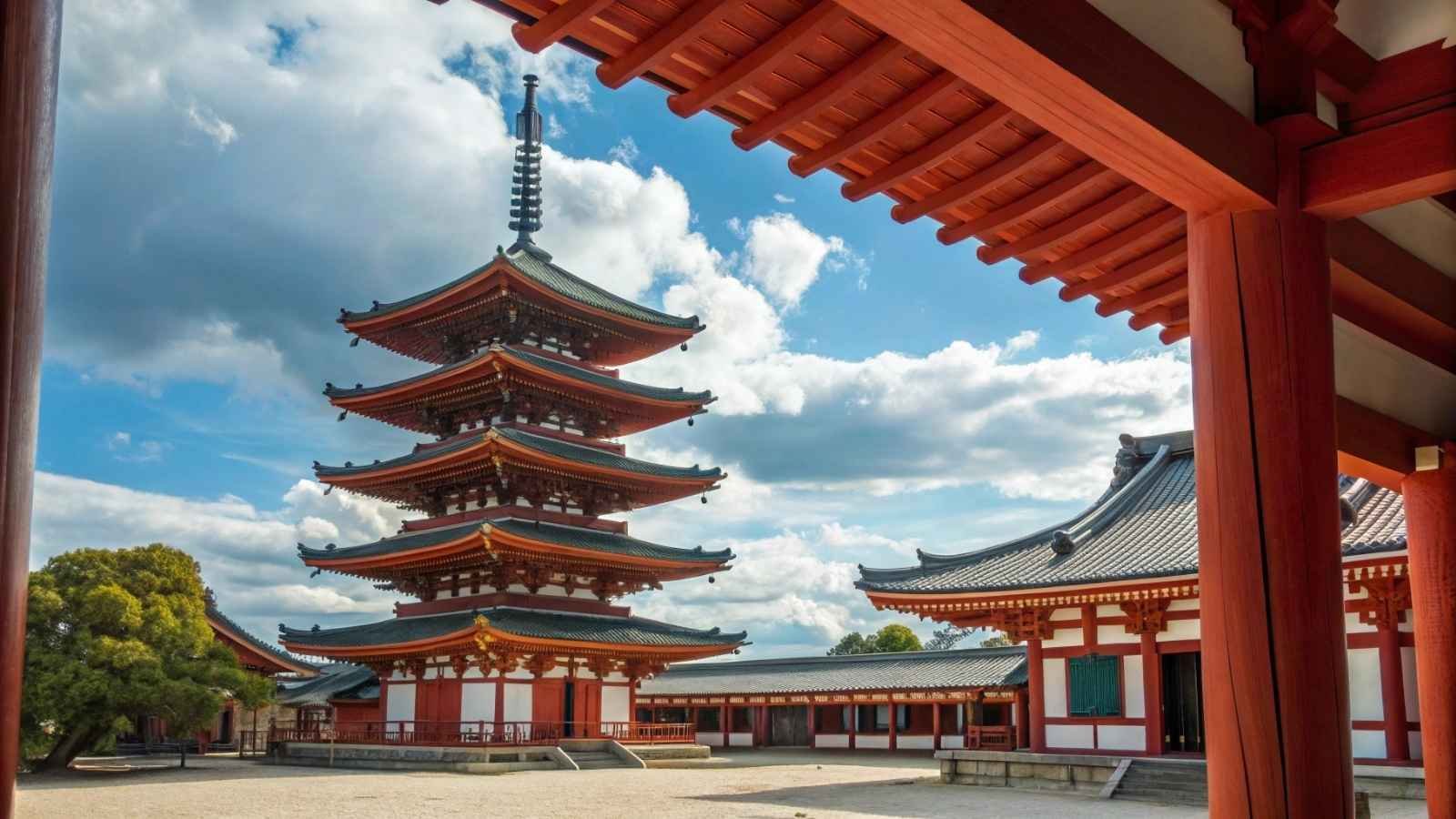
Swap pixels for paper lanterns in Kyoto, where centuries-old shrines hide behind bamboo groves and the only “algorithm” you’ll follow is the scent of matcha drifting from a teahouse. I once spent an afternoon in Gion with nothing but a hand-drawn map from a kimono-clad shopkeeper, stumbling upon a tiny calligraphy studio where an elderly sensei taught me to ink my name—slow, deliberate strokes, no undo button.
Why it’s analog gold: Kyoto rewards those who wander without GPS—think hidden temple gates, fortune slips (omikuji) tied to tree branches, and scribbling haikus in a washi-paper journal. Plus, Instagram can’t capture the sound of a shamisen echoing down an alley at dusk.
Need-to-know:
- Best months: March (cherry blossoms) or October (crimson maples)—avoid Golden Week (late April/early May).
- Analog essentials: A ryokan-provided paper map, a stamp book for temple seals, and coins for vending-machine fortunes.
- Pro tip: Rent a bicycle—Kyoto’s grid is made for two-wheeled exploration.
7. The Silk Road (Central Asia)

This isn’t a trip—it’s a time warp. Picture yourself haggling for spices in Uzbekistan’s Registan Square, tracing the crumbling caravanserais where Marco Polo once slept, or bartering for a hand-knotted rug with nothing but finger-counting and grins. On a Silk Road train (yes, they exist!), I shared a compartment with a Kazakh eagle hunter who sketched his favorite mountain passes on my napkin—no translation app needed.
Why it’s analog gold: The Silk Road thrives on human connection—handshakes seal deals and your best guide is often a grandmother’s pointing finger. Plus, postcards from Bukhara’s blue-tiled madrasas? Unfiltered magic.
Need-to-know:
- Best months: April–June or September–October (skip the desert summer).
- Analog essentials: A silk-scarf-wrapped journal, a compass (for desert stops), and candy for bribing border guards (kidding… mostly).
- Pro tip: Learn Cyrillic script—many signs lack Latin letters.
8. The Amalfi Coast by Paper Map (Italy)
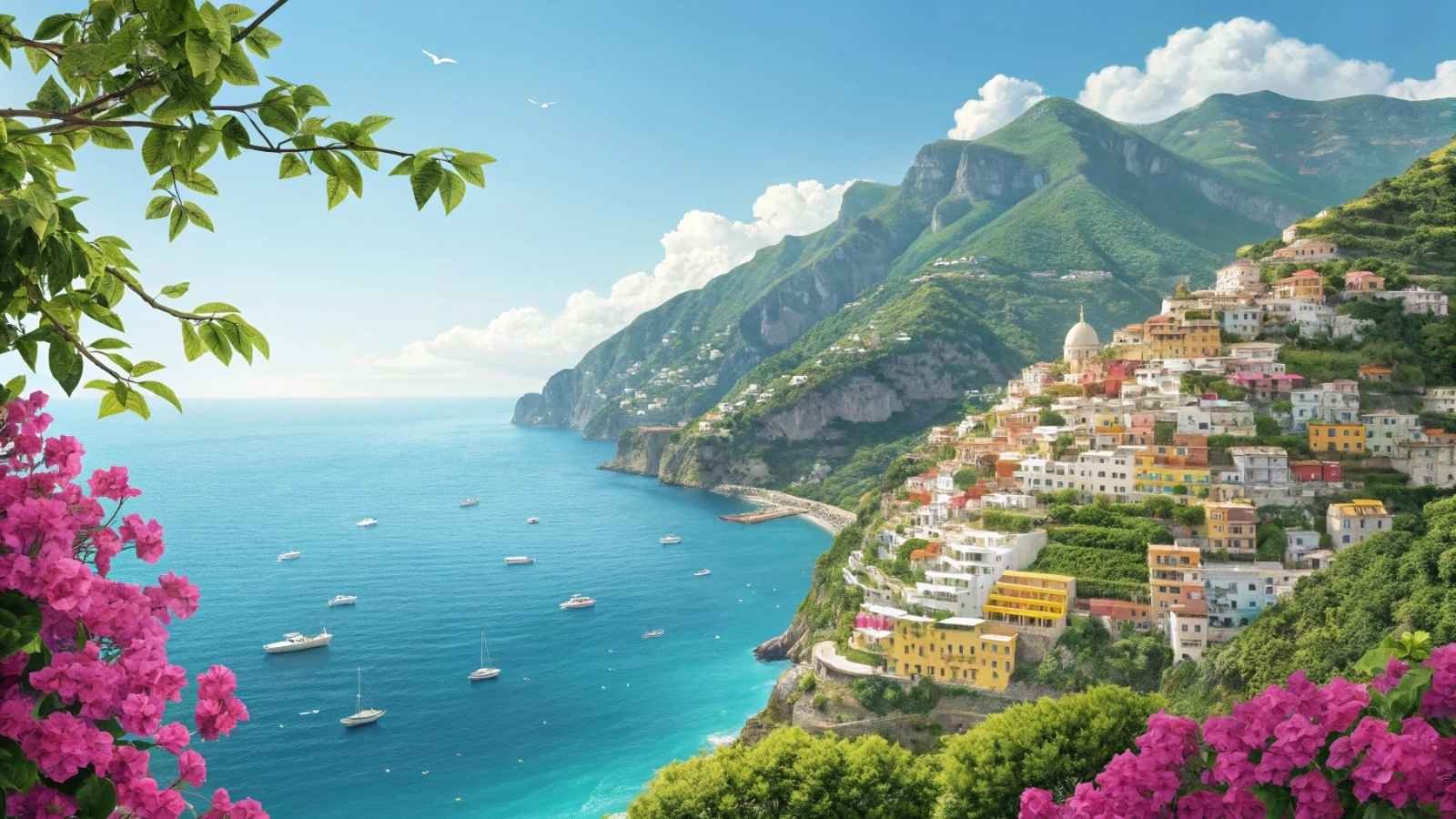
Throw your phone into the Tyrrhenian Sea—okay, don’t, but Amalfi’s hairpin turns and lemon groves demand old-school navigation. I once missed a bus in Positano and hitchhiked with a fisherman who navigated by “the smell of salt and Nonna’s cooking” (he was right). Here, you’ll follow hand-painted ceramic signs to family-run trattorias, where menus are chalkboard-scrawled and your “check-in” is a kiss on the cheek from the owner.
Why it’s analog gold: Google Maps short-circuits on these cliffs, but a foldable cartographic map leads to secret beach coves and limoncello tastings in someone’s backyard.
Need-to-know:
- Best months: May or September—July/August are sardine-packed.
- Analog essentials: A waterproof map, a string bag for lemons, and sandals you can hike in (stairs. So many stairs).
- Pro tip: Take a ferry—the sea views beat the traffic jams.
9. The Canadian Rockies by Train (Canada)

All aboard the slow-travel revival! Canada’s Rocky Mountaineer train is a moving postcard—glaciers, elk herds, and pine forests so thick you’ll forget the word “Wi-Fi.” I once spent a journey chatting with a retired park ranger who pointed out off-map wolf dens between sips of maple whiskey. Pro tip: Pack a vintage-style rail timetable—it’s oddly satisfying to track progress the 1920s way.
Why it’s analog gold: No screens, just panoramas—plus, train staff hand out old-school binoculars for spotting grizzlies.
Need-to-know:
- Best months: June–August (wildflowers) or September (golden larches).
- Analog essentials: A field guide to wildlife, a thermos for cowboy coffee, and postcards stamped “VIA Rail.”
- Pro tip: Book a dome car seat—sunrise over Lake Louise is worth the splurge.
10. The Nile River Cruise (Egypt)

Forget influencers—pharaohs were the OG travel bloggers. Drifting down the Nile on a felucca (sailboat) or vintage steamer, you’ll decode hieroglyphs with a pocket guidebook, trade stories with Nubian sailors, and barter for papyrus paintings at riverside markets. My favorite moment? Watching a farmer untangle his fishing net at dawn, humming a tune older than the pyramids.
Why it’s analog gold: Temples like Karnak and Philae demand imagination, not Instagram—and your captain navigates by starlight some nights.
Need-to-know:
- Best months: October–April (avoid scorching summer).
- Analog essentials: A papyrus notebook, a hand fan (no AC on feluccas!), and pencils for sketching temples (ink smudges in heat).
- Pro tip: Pack a scarf—dusty ruins + Nile wind = mummy-chic.
11. The Wild Atlantic Way (Ireland)

Ireland’s west coast is a siren song for analog adventurers—cliffside roads dead-end into sheep pastures, and pub directions involve “turn left where the old tree split in ’87.” I once followed a handwritten sign for “The Best Brown Bread in Connemara” (it was) and spent the evening jamming with a fiddler who tuned his violin with a butter knife.
Why it’s analog gold: No service? No stress. You’ll navigate by tide charts, local gossip, and the occasional rainbow—plus, nothing beats mailing a postcard from Europe’s western edge.
Need-to-know:
- Best months: May–July (longest days) or September (storm-chaser drama).
- Analog essentials: A tide timetable, a whistle for coastal fog, and a €2 coin for roadside honesty boxes (eggs, jam, etc.).
- Pro tip: Stop at Teach Hiúdaí Beag—a tiny Galway pub where the playlist is live and the oysters are shucked to order.


